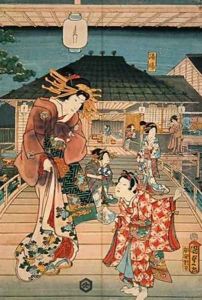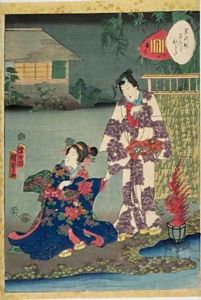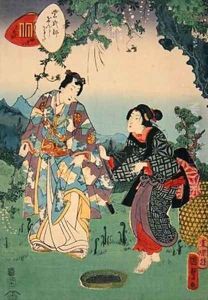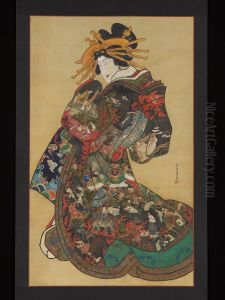Utagawa Kunisada II Paintings
Utagawa Kunisada II was a Japanese woodblock print artist who was active during the late Edo and early Meiji periods. He was born in 1823 in Edo (present-day Tokyo), Japan. Kunisada II was not related by blood to his more famous master Utagawa Kunisada I, but he married the eldest daughter of Kunisada I and was adopted into the family, subsequently taking on the Utagawa name.
Kunisada II was a talented student and quickly made a name for himself within the Utagawa school, which was one of the most dominant and prolific schools of ukiyo-e art at the time. His works were primarily yakusha-e (actor prints) and bijinga (pictures of beautiful women), which were popular genres in ukiyo-e, the traditional Japanese woodblock printing. He also produced a number of landscapes and warrior prints. Kunisada II worked extensively with the publishers of his time, contributing to the mass production of ukiyo-e prints that were sold as affordable art to the burgeoning middle class in Japan.
During his career, Kunisada II continued the legacy of his master and the Utagawa school's style, characterized by bold lines, vivid colors, and dynamic compositions. However, he also developed his own distinctive style, which can be discerned in his delicate portrayal of figures and a subtler approach to color gradation.
Kunisada II's work was somewhat overshadowed by that of his master and other contemporaries such as Utagawa Kuniyoshi and Utagawa Hiroshige. Despite this, he enjoyed a successful career and produced a vast body of work that contributed significantly to the ukiyo-e genre. His prints are still appreciated today for their technical quality and aesthetic appeal.
Utagawa Kunisada II passed away in 1880, leaving behind a rich legacy in the world of Japanese art. His prints continue to be a valuable part of the ukiyo-e tradition, providing insight into the culture and society of the late Edo period. Although he did not achieve the same level of fame as some of his peers, his work remains an important part of the history of Japanese art.



